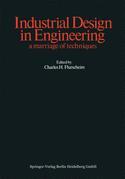Description
Industrial Design in Engineering, Softcover reprint of the original 1st ed. 1983
a marriage of techniques
Coordinator: Flurscheim C.H.
Language: English
Keywords
Design; Engineering; Ergonomie; Produktgestaltung; Technisches Erzeugnis
Publication date: 04-2014
390 p. · 17x24.4 cm · Paperback
390 p. · 17x24.4 cm · Paperback
Description
/li>
home and his clothes with paints and dyes, building better structures, and using fire and tools effectively. The great Chinese, Greek and Roman civilisations all added to the new use of materials, and sculpture and architecture went hand in hand with intellectual and philosophical development. Plato, Euclid, Socrates, Galileo, Leonardo da Vinci, and many others brought society through to the modern age and the start of the Industrial Revolution. More recently another revolution in technology has brought robotics and miniaturisation of components, thus bringing industry more automation and less need for man-operated machinery. During this time engineers have continued to study nature as a model for construction and development. An example is Louis Sullivan with his tension and compression structures based on the Morning Glory flower. Now, the new technique of continuous glass fibre structures, developed by Dr Math (Mathweb) of British Petroleum, go a long way towards helping man to emulate the spider. Developments in rotational moulding, ceramics, glass, controlled crystallisation of metals and many other areas have all introduced new shape possibilities, so now the engineer is more often than not required to be the arbiter of shape and form, rather than being overtly constrained by necessity. It has, however, become possible to distinguish three distinct elements in the design of form which can act as guidelines for the designer, and it is worth studying these in detail.
© 2024 LAVOISIER S.A.S.

